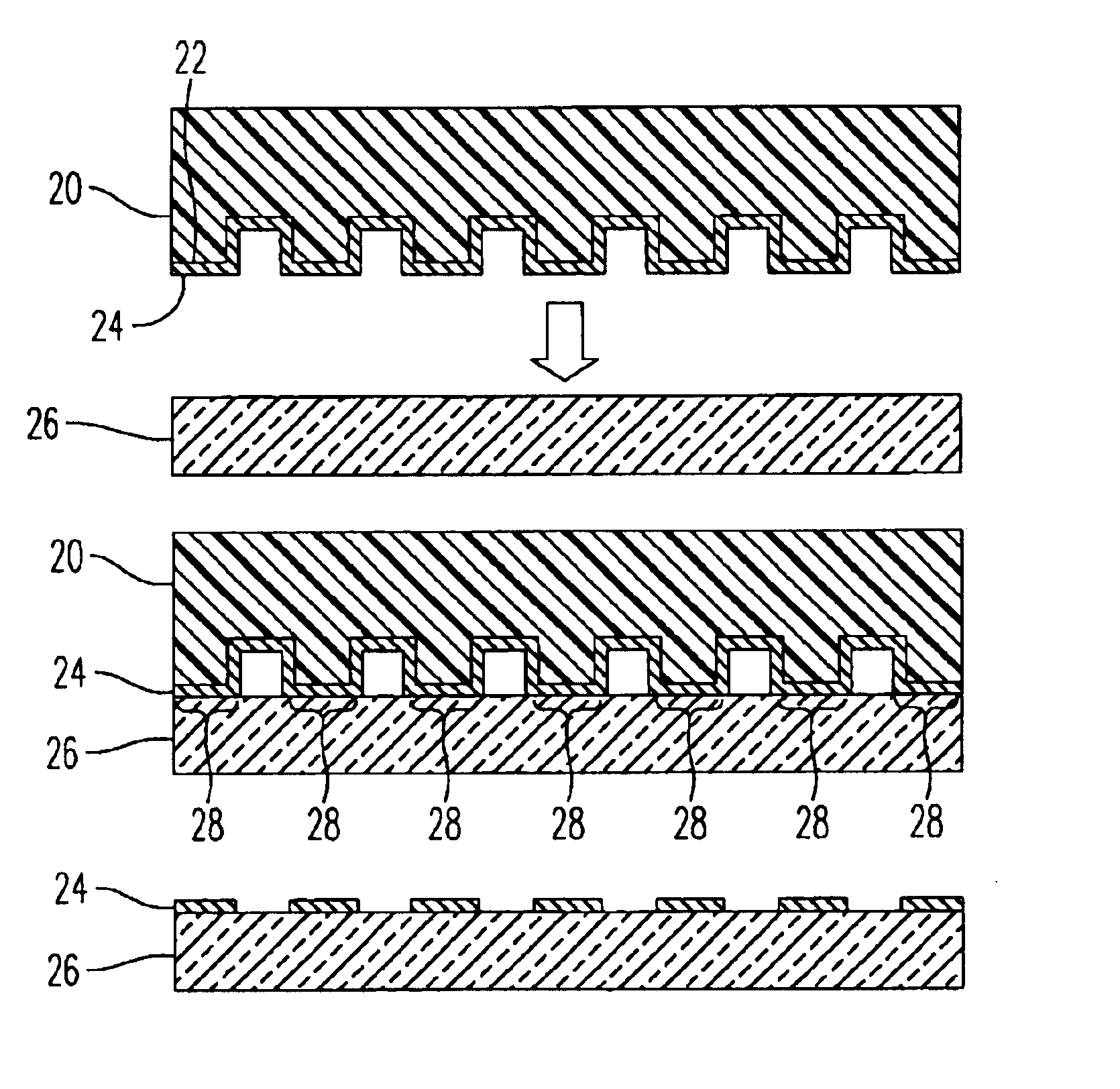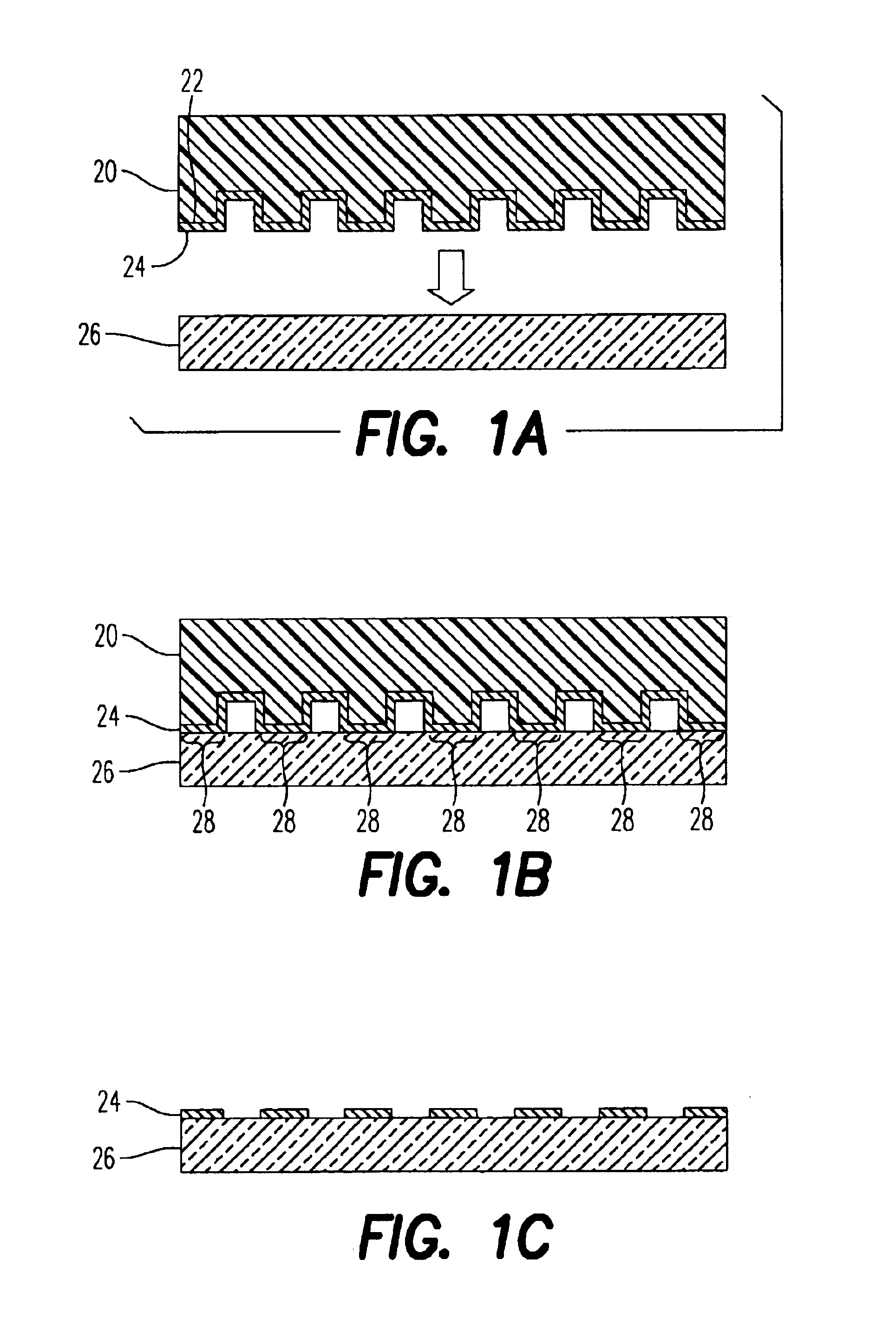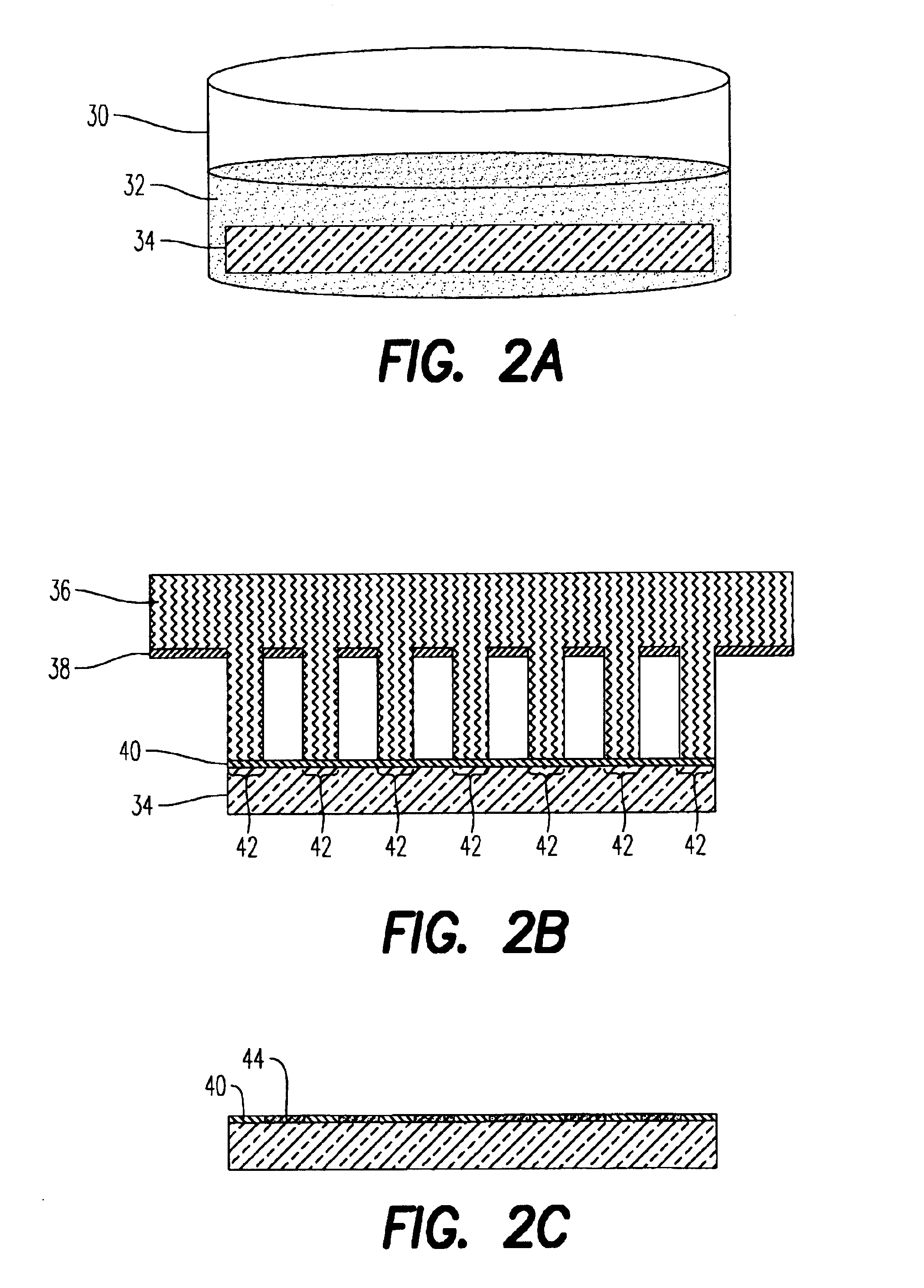Patterning solution deposited thin films with self-assembled monolayers
a technology of self-assembled monolayers and thin films, which is applied in the direction of liquid/solution decomposition chemical coating, conductive pattern formation, resistor manufacturing, etc., can solve the problems of degrading the desirable material properties (e.g., electrical, optical, magnetic or structural properties) of the thin film, and both complex and costly, and degrading the deposited thin film
- Summary
- Abstract
- Description
- Claims
- Application Information
AI Technical Summary
Benefits of technology
Problems solved by technology
Method used
Image
Examples
example 1
[0099]A template having an exposed and developed photoresist pattern was fabricated by photolithography. A 10:1 (w:w or v:v) mixture of PDMS-Sylgard Silicone Elastomer 184 and Sylgard Curing Agent 184 (Dow Corning Corp., Midland, Mich.) was degassed under vacuum for about 10 minutes, then the mixture was poured over the template. The PDMS cured at 65° C. within 60 minutes to produce an elastomeric stamp. After cooling to room temperature, the PDMS stamp was carefully peeled from the template. A thermally grown silicon dioxide surface on an n-type silicon wafer was patterned with a self-assembled molecular monolayer of octadecyl phosphonic acid by the elastomeric stamp using microcontact printing, as illustrated in FIGS. 1A-C.
[0100]The phosphonic acid terminal head group acts to bind to the hydrophillic silicon dioxide surface and the long octadecyl chain imparts a contrasting hydrophobic surface. Patterning the silicon dioxide surface with octadecylphosphonic acid provides a substra...
example 2
[0103]A silicon dioxide surface on an n-type silicon wafer was patterned by microcontact printing with a self-assembled monolayer of the fluorinated silane having the formula (tridecafluoro 1,1,2,2-tetrahydrooctyl)trichlorosilane. The trichlorosilane head group acts to bind to the hydrophilic silicon dioxide surface and the fluorinated hydrocarbon tail group imparts a contrasting hydrophobic surface, akin to Teflon. The chemical differentiation across the substrate surface was similarly used to define the pattern of deposited thin films of various organic-inorganic hybrid materials.
[0104]Each of the following organic-inorganic hybrid materials were used:[0105](1) phenethylammonium tin iodide having the formula (C6H5C2H4NH3)2SnI4 from a solution in methanol;[0106](2) butylammonium methylammonium tin iodide having the formula (C4H9NH3)2CH3NH3Sn2I7 from a solution in N,N-dimethylformamide;[0107](3) phenethylammonium methylammonium tin iodide having the formula (C6H5C2H4NH3)2CH3NH3Sn2I7...
example 3
[0112]As silicon dioxide surface on an n-type silicon wafer is patterned by microcontact printing with a self-assembled monolayer of (tridecafluoro 1,1,2,2-tetrahydrooctyl)trichlorosilane (a fluorinated silane).
[0113]The chemical differentiation on the substrate surface is used to define the pattern of deposited thin film of the copolymer polymethyl methacrylate / methyl methacrylate (PMMA / MMA) from a solution in ethyl lactate. PMMA / MMA is used as an insulator in electrical applications and as a material to prepare microlenses for optical applications. It is also a resist for e-beam lithography.
[0114]The method of the present invention can be used to define large features in resist and e-beam lithography can be used to pattern small features. The hybrid technique resulting from the combination of these methods allows patterning of both large and small features on the substrate thereby reducing the time and the overall cost of patterning relative to using e-beam lithography alone.
PUM
| Property | Measurement | Unit |
|---|---|---|
| Flexibility | aaaaa | aaaaa |
| Semiconductor properties | aaaaa | aaaaa |
Abstract
Description
Claims
Application Information
 Login to View More
Login to View More - R&D
- Intellectual Property
- Life Sciences
- Materials
- Tech Scout
- Unparalleled Data Quality
- Higher Quality Content
- 60% Fewer Hallucinations
Browse by: Latest US Patents, China's latest patents, Technical Efficacy Thesaurus, Application Domain, Technology Topic, Popular Technical Reports.
© 2025 PatSnap. All rights reserved.Legal|Privacy policy|Modern Slavery Act Transparency Statement|Sitemap|About US| Contact US: help@patsnap.com



